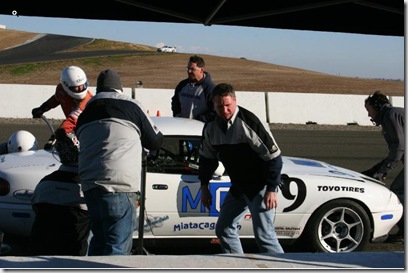Recently, Marketing Sherpa published a report that highlights social media’s effectiveness on program outcomes. Ok, first of all, for the fifty-fifth time, Social Media is a tactic, not a strategy but I digress.
Marketing Sherpa’s report included the below graphic which showcases the impact of Social.
In looking at this graph, what comes to mind first?
Breadth of potential impact?
Clearly it must be widespread adoption, right?
That’s not what caught my eye. The first thing I noticed was that Social, in every single category, was doing a mediocre job at delivering results. Sure, some of this is because it is a new discipline and people are learning. That’s fair. However, I think a bigger reason is because Social is siloed inside organizations. For most brand experiences, social provides no unified and meaningful experience for the customer…yet. Why is this?
Teams inside organizations are not working together, not sharing information and not collaborating on a single end result. That’s why social is currently a mediocre performer.
To illustrate my point take a look at the two below pictures. Imagine that both teams are racing in the same motor car race. Who is likely to win the race?
Team 1

Team 2

I’d put my money on Team 2. Why? Obviously, they are more serious about racing than Team 1. Sure, both team’s have made an investment to be there, as they both have race cars but Team 2 is working with a single and planned purpose and they are working as a focused team with a sense of urgency. They’ve made the right investments in effort, infrastructure and people needed to win.
For most brands, winning the social race means getting tactics and tools online. Have a Facebook presence? Check. Have somebody manning Twitter? Check. Have a community tab? Check. Have a 20-something you’ve hired to be the social media guru? Check. This approach is the same as fielding a five year old car and having your buddies play pit crew.
None of the above activities will have any significant impact on your brand value, your customer lifetime value, customer retention or your contribution to net margin or net profit….all of which are the key metrics you should be in large part concerned with.
Just like Team 1, taking this approach, you may finish the race, but is that the goal? You won’t win. Team 2 will always beat you. Team 2 is the brand whose departments and teams all have the eye on a single, well defined prize. They know their roles and are willing to work as a seamless team…just like Team 2.
“Well”, you may be saying to yourself “This isn’t a race. I don’t buy the analogy.”
That’s fine. You don’t have to. However, you are in a race. Your race is to win and keep the hearts, minds and wallets of your consumers. To win more while you keep more. You have to be relevant, you have to be genuine and believable and you have to deliver value to survive. Don’t believe me? Ask Barry Judge, the CMO of Best Buy his thoughts on it. He’s on Team 2. Or, you can ask Circuit City’s former CMO Peter Weedfald. He was on Team One.
All of this said, here is your race checklist. This’ll get you Team One level sponsorship…and results.
Team Two Checklist
- Define clearly your Social Mandate.
- Have everyone on your team be able to say in 15 words or less why people would want to participate in your community on an ongoing basis.
- Tie your efforts directly to actionable and meaningful business outcomes your CEO and shareholders would approve of.
- Institute an internal cross-functional core team who shares responsibility and ownership equally.
- Question everything. Begin at the end. Review your touch points and experiences (social and non-social) from the consumer’s point of view. Is your overall experience disjointed and confusing (i.e. a patchwork of experiences and promises) or seamless (is it hard to tell where product and services overlap with branded content and voice of customer).
- Inventory your assets. All of them. Is your engagement faceted (meaning you have multiple ways for users to engage)?
- Treat your community/social assets like assets…no different than patents or products.
- Conduct a GAP analysis. Overlay your findings with your mandate, your metrics and your skills and resources?
- Be honest. Don’t lie or fudge.
- Institute a listening program.
- Close the gaps in small, measurable steps. Integrate channels, processes and protocols to collect, act on what you learn.
- Institute and act on the above as a cohesive team. Remember, no one department ‘owns’ the customer experience.
So back to Marketing Sherpa’s graph I presented at the outset of this post. Why is social providing such mediocre results? It’s because brands have chosen or slipped into performing as Team 1. Winning at Social requires brands to take control over your own brand’s ability to win, like Team 2.
Giving the customer control only is effective once you have done your race prep.


